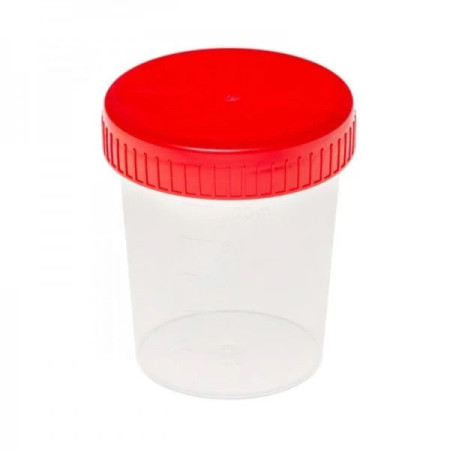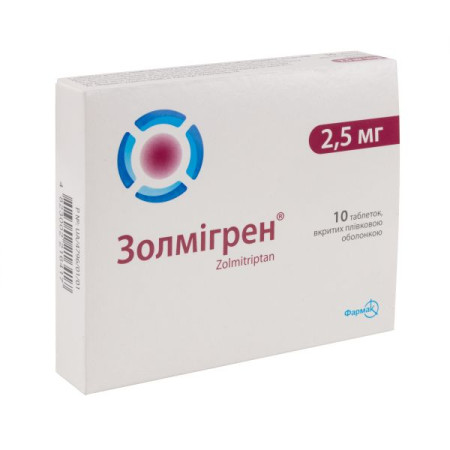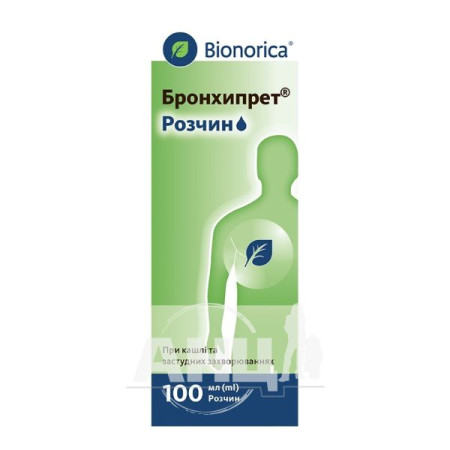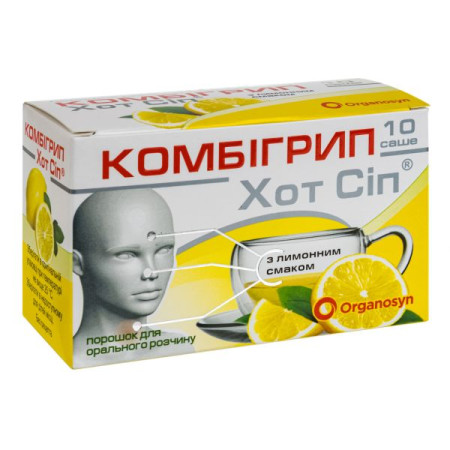Virostat tablets 500 mg No. 21

Instructions for use Virostat tablets 500 mg No. 21
Composition
active ingredient: famciclovir;
1 tablet contains famciclovir 250 mg or 500 mg;
excipients: sodium starch glycolate (type A), hydroxypropyl cellulose, magnesium stearate; shell: Opadry White film coating mixture: hypromellose (hydroxypropyl methylcellulose), titanium dioxide, polyethylene glycol (macrogol).
Dosage form
Film-coated tablets.
Main physicochemical properties:
250 mg tablets: round tablets, with a biconvex surface, coated with a white or almost white film coating;
500 mg tablets: oblong tablets with a biconvex surface, coated with a white or almost white film coating.
Pharmacotherapeutic group
Direct-acting antivirals. Nucleosides and nucleotides. Famciclovir. ATX code J05A B09.
Pharmacological properties
Pharmacodynamics.
Famciclovir is rapidly converted in vivo to penciclovir, which has demonstrated in vitro antiviral activity against herpes simplex viruses (types 1 and 2), varicella virus, Epstein-Barr virus, and cytomegalovirus.
The antiviral effect of oral famciclovir has been observed in various animal models. In virus-infected cells, penciclovir is rapidly and efficiently converted to the triphosphate (mediated by virus-induced thymidine kinase). This triphosphate is present in infected cells for more than 12 hours and inhibits viral DNA replication. Penciclovir triphosphate has a half-life of 10 hours in cells infected with HSV-1 (Herpes Simplex virus), 20 hours in cells infected with HSV-2, and 7 hours in cells infected with Varicella Zoster virus (VZV) grown in culture.
Penciclovir triphosphate is barely detectable in uninfected cells exposed to penciclovir. Therefore, the likelihood of its toxicity to mammalian cells is very low, and it is unlikely that uninfected cells will be affected at therapeutic concentrations of penciclovir.
As with acyclovir, resistance to penciclovir is primarily associated with mutations in the thymidine kinase (TK) gene, resulting in deficiency or altered substrate specificity of this enzyme, and to a much lesser extent, with mutations in the DNA polymerase gene. Most clinical isolates of HSV and VZV that are resistant to acyclovir are also resistant to penciclovir, but cross-resistance is not universal.
The most common form of resistance to acyclovir among herpes simplex virus strains is deficiency in the synthesis of the enzyme thymidine kinase (TK). Such TK-deficient strains are cross-resistant to both penciclovir and acyclovir. However, penciclovir has been shown to be active against recently isolated acyclovir-resistant strains of herpes simplex virus with defective DNA polymerase.
In studies of suppression of recurrences of genital herpes, in which patients with a normally functioning immune system were treated with famciclovir for 4 months, no resistance to penciclovir was detected in the analysis of isolated cultures from 71 patients.
Results of studies of the use of penciclovir and famciclovir in patients, including treatment with famciclovir for up to 12 months, showed a low frequency of penciclovir-resistant cultures: 0.2% of all 913 tested cultures from immunocompetent patients and 2.1% of 288 viral cultures isolated from patients with a compromised immune system.
Resistant cultures were detected before treatment or in the placebo group, but only 2 cases of resistance in immunocompromised patients were observed during or after treatment with famciclovir or penciclovir.
Studies have shown that famciclovir significantly reduced the duration of postherpetic neuralgia in patients over 50 years of age with shingles, when used as soon as possible after the onset of the rash (within 72 hours).
In studies involving immunocompromised patients with AIDS, it was found that famciclovir at a dose of 500 mg twice daily significantly reduced the ratio of days with symptoms of HSV-associated lesions to the number of asymptomatic days.
The study demonstrated the efficacy and good tolerability of famciclovir in the treatment of ocular herpes zoster.
Pharmacokinetics
Food intake reduces Cmax and Tmax of penciclovir, but does not affect the bioavailability of penciclovir.
The terminal half-life of penciclovir after both single and repeated doses of famciclovir is approximately 2 hours. There is no accumulation of penciclovir after repeated doses of famciclovir. Penciclovir and its 6-deoxy-precursor are weakly (< 20%) bound to plasma proteins.
The volume of distribution (Vd) of penciclovir is approximately 1 L/kg.
There are no significant differences in the distribution and elimination characteristics of penciclovir after oral or parenteral administration of pharciclovir in immunocompetent patients or in patients with compromised immune systems.
Famciclovir is excreted primarily as penciclovir and its 6-dioxy precursor, which are excreted in the urine, with no unchanged famciclovir detected in the urine. Tubular secretion contributes to renal elimination of the compound.
The terminal half-life of penciclovir is approximately 2 hours. Renal clearance accounts for 80% of the total clearance of penciclovir.
Patients with shingles infection
Uncomplicated herpes zoster infection does not significantly affect the pharmacokinetics of penciclovir, which is altered after oral administration of famciclovir. The terminal half-life of penciclovir in patients with herpes zoster infection was 2.8 hours and 2.7 hours, respectively, after single and multiple doses of famciclovir.
Patients with renal insufficiency
Apparent plasma clearance, renal clearance, and elimination rate constant of penciclovir decreased linearly with decreasing renal function after both single and multiple doses. Dosage adjustment is required for patients with renal insufficiency (see Dosage and Administration).
Patients with hepatic insufficiency
Chronic liver disease in the stage of compensation did not affect the degree of systemic bioavailability of penciclovir after oral administration of famciclovir. No dosage adjustment is required for patients with compensated liver disease (see sections "Method of administration and dosage" and "Special warnings and precautions for use"). The pharmacokinetics of penciclovir have not been studied in patients with severe decompensated liver disease.
Elderly patients
In studies, the mean AUC of penciclovir was approximately 40% higher and the renal clearance of penciclovir was approximately 20% lower after oral administration of famciclovir in elderly volunteers (65-79 years) compared to younger volunteers. This difference may be due to differences in renal function between the two age groups. No dosage adjustment is necessary based on age unless renal function is impaired (see Dosage and Administration).
Sex
There were small differences in renal clearance of penciclovir between men and women, which was related to sex differences in renal function. No dosage adjustment is necessary based on gender.
Ethnicity
There were no differences in the pharmacokinetics of penciclovir between representatives of the Negroid and Caucasian races.
Preclinical safety data.
Carcinogenicity
No effects were observed in studies at 200 mg/kg/day. At the maximum tolerated dose of 600 mg/kg/day, an increased incidence of mammary adenocarcinoma, a typical tumor of this rat strain, was observed in female rats. There was no effect on the incidence of neoplasia in male rats at doses up to 240 mg/kg/day or in mice of either sex at doses up to 600 mg/kg/day.
Genotoxicity
Famciclovir was not genotoxic in in vivo and in vitro assays designed to detect gene mutation, chromosomal damage, and DNA damage. Penciclovir, like other drugs in this class, can cause chromosomal damage, but it did not induce gene mutations in bacterial or mammalian cell systems, nor was there evidence of increased DNA repair in vitro.
Reproductive toxicity
Famciclovir was well tolerated in laboratory animals. As with other drugs of this class, degenerative changes in the testicular epithelium were observed.
Famciclovir had no significant effect on sperm count, morphology, or motility in males. Impaired fertility was observed in male rats at 500 mg/kg/day. No effect on fertility was observed in female rats given famciclovir at doses up to 1000 mg/kg/day.
Indication
Infections caused by the Varicella Zoster virus (VZV), or shingles:
herpes zoster, including ocular herpes zoster in immunocompetent adult patients;
Shingles in adult patients with weakened immunity.
Infections caused by the Herpes Simplex Virus (HSV) - genital herpes:
treatment of the first manifestations and recurrences of infectious genital herpes in immunocompetent adult patients;
treatment of recurrent genital herpes in adult patients with weakened immunity;
Suppression of recurrent genital herpes in immunocompetent adult patients and in immunocompromised adult patients.
Contraindication
Hypersensitivity to famciclovir or other components of the drug, as well as hypersensitivity to penciclovir.
Interaction with other medicinal products and other types of interactions
Effects of other drugs on famciclovir
Probenecid and other drugs that affect renal physiology may alter the plasma levels of penciclovir (the active metabolite of famciclovir).
Therefore, patients receiving famciclovir 500 mg three times daily with probenecid should be monitored, particularly for toxicity. A dose reduction may be necessary for these patients.
No clinically significant changes in the pharmacokinetics of penciclovir were observed when a single 500 mg dose of famciclovir was administered after previous treatment with multiple doses of allopurinol, cimetidine, theophylline, zidovudine or promethazine or shortly after administration of antacids (magnesium hydroxide and aluminum hydroxide), or when co-administered with emtricitabine. No clinically significant effect on the pharmacokinetics of penciclovir was observed after multiple (three times daily) administration of famciclovir (500 mg) with multiple doses of digoxin.
The conversion of the inactive metabolite 6-deoxypenciclovir to penciclovir (via deacetylation of famciclovir) is catalyzed by aldehyde oxidase. There is a potential for interactions with other drugs metabolized by and/or inhibited by this enzyme. In vitro studies of the interaction of famciclovir with cimetidine and promethazine, inhibitors of aldehyde oxidase, have shown no significant effect on the formation of penciclovir. However, raloxifene, a more potent inhibitor of aldehyde oxidase that has been studied in vitro, may affect the formation of penciclovir and thus the efficacy of famciclovir.
Effect of famciclovir on other drugs
The pharmacokinetics of digoxin were not altered by co-administration of single or multiple (three times daily) doses of famciclovir (500 mg). There was no clinically significant effect on the pharmacokinetics of zidovudine, its metabolites zidovudine glucuronide, or emtricitabine following a single 500 mg oral dose of famciclovir when co-administered with zidovudine or emtricitabine.
Although famciclovir is only a weak inhibitor of aldehyde oxidase in vitro, interactions with drugs metabolized by aldehyde oxidase are potentially possible. Studies have not shown the potential for cytochrome P450 induction or CYP3A4 inhibition.
Application features
Use in patients with renal insufficiency
Particular attention should be paid to patients with impaired renal function, who require dosage adjustment (see sections “Method of administration and dosage” and “Overdose”).
Acute renal failure has been observed in patients with renal insufficiency after administration of doses that are high in relation to the degree of renal impairment.
Use in patients with hepatic insufficiency
Patients with mild to moderate hepatic impairment do not require dose adjustment. This also applies to elderly patients without renal impairment. The effect of famciclovir has not been studied in patients with severe hepatic impairment. The conversion of famciclovir to its active metabolite penciclovir may be impaired in such patients, which may lead to reduced plasma concentrations of penciclovir and, consequently, to reduced efficacy of famciclovir.
Use in the treatment of shingles
Clinical response should be closely monitored, especially in immunocompromised patients. Intravenous antiviral therapy should be considered if response to oral therapy is considered inadequate.
Patients with complicated herpes zoster, such as those with internal organ involvement, disseminated herpes zoster, motor neuropathy, encephalitis, and cerebrovascular complications, should receive intravenous antiviral therapy.
In addition, immunocompromised patients with ocular herpes zoster and patients at high risk of disease spread and internal organ involvement should receive intravenous antiviral therapy.
Transmission of genital herpes
Genital herpes is a sexually transmitted disease. The risk of transmission is increased during the acute phase of the disease. Patients should be advised to avoid sexual intercourse if they are symptomatic, even if antiviral therapy has already been initiated. During suppressive therapy with antiviral agents, the frequency of viral shedding is significantly reduced. However, the risk of transmission remains theoretically possible, so patients should use appropriate contraception.
Use during pregnancy or breastfeeding
Pregnancy: Although animal studies have not shown any embryotoxic or teratogenic effects of famciclovir or penciclovir, the safety of famciclovir in pregnant women has not been established.
Lactation: Studies in rats have shown that penciclovir is excreted in the breast milk of dams given famciclovir orally. It is not known whether penciclovir is excreted in human milk. Therefore, famciclovir should be used during pregnancy or breastfeeding only if the expected benefit to the woman justifies the potential risk to the infant.
According to clinical data, no effect of famciclovir on male fertility was detected after long-term oral administration of the drug at a dose of 250 mg twice daily.
Ability to influence reaction speed when driving vehicles or other mechanisms
There are no data on the impairment of patients' ability to drive or operate machinery under the influence of famciclovir. However, patients who experience dizziness, drowsiness, confusion, or other central nervous system disorders while taking the drug should refrain from driving or operating machinery.
Method of administration and doses
Since the systemic bioavailability of penciclovir was not altered when famciclovir was taken with food, famciclovir can be administered without regard to meals.
Shingles in immunocompetent patients
For the treatment of shingles - 500 mg 3 times a day for 7 days. For the treatment of shingles with eye complications - 500 mg 3 times a day for 7 days. Treatment gives better results if it is started immediately after the appearance of the rash.
Shingles in immunocompromised patients:
500 mg 3 times a day for 10 days. It is recommended to start treatment immediately after the appearance of rashes.
Genital herpes in immunocompetent patients:
first manifestation of genital herpes:
250 mg 3 times a day for 5 days. It is recommended to start treatment immediately after the first manifestation of genital herpes;
Recurrence of genital herpes:
125 mg 2 times a day for 5 days*. It is recommended to start treatment in the prodromal period (tingling sensation, itching, burning, pain) or immediately after the first manifestation of genital herpes.
* It is recommended to use famciclovir drugs in the appropriate dosage.
Recurrence of genital herpes in immunocompromised patients:
500 mg 2 times a day for 7 days. It is recommended to start treatment in the prodromal period (tingling sensation, itching, burning, pain) or immediately after the appearance of rashes.
Suppression of recurrent genital herpes in immunocompetent patients:
250 mg twice daily. The duration of treatment depends on the severity of the disease, but treatment should be discontinued after 12 months of continuous therapy in order to reassess the severity of relapses and their frequency. The minimum reassessment period should include two relapses. A dose of 500 mg twice daily has been shown to be effective in immunocompromised patients.
Suppression of recurrent genital herpes in immunocompromised patients:
500 mg 2 times a day.
Dosage for patients with impaired renal function
Since decreased clearance of penciclovir is associated with impaired renal function, consistent with changes in creatinine clearance, special attention should be paid to dosing in patients with impaired renal function.
The following dosage regimen is recommended:
Table 1
Shingles in patients with a normally functioning immune system and patients with a compromised immune system
Creatinine clearance (ml/min/1.73 m2) | Dosage |
| ³ 60 | 500 mg 3 times a day for 7 or 10 days** |
| From 40 to 59 | 500 mg twice daily for 7 or 10 days** |
| From 20 to 39 | 500 mg once daily for 7 or 10 days** |
| < 20 | 250 mg once daily for 7 or 10 days** |
| Patients on dialysis | 250 mg after each dialysis for 7 or 10 days** |
**7 days for patients with normal immunity, 10 days for patients with compromised immune systems.
Table 2
The first manifestation of genital herpes
Creatinine clearance (ml/min/1.73 m2) | Dosage |
| ³ 40 | 250 mg 3 times a day for 5 days |
| From 20 to 39 | 250 mg 2 times a day for 5 days |
| < 20 | 250 mg once daily for 5 days |
| Patients on dialysis | 250 mg after each dialysis for 5 days |
Table 3
Recurrence of genital herpes in patients with a normally functioning immune system
Creatinine clearance (ml/min/1.73 m2) | Dosage |
| ³ 20 | 125 mg twice daily for 5 days* |
| < 20 | 125 mg once daily for 5 days* |
| Patients on dialysis | 125 mg after each dialysis for 5 days* |
* It is recommended to use famciclovir drugs in the appropriate dosage.
Table 4
Recurrence of genital herpes in patients with compromised immune systems
Creatinine clearance (ml/min/1.73 m2) | Dosage |
| ³ 40 | 500 mg 2 times a day for 7 days |
| From 20 to 39 | 500 mg once daily for 7 days |
| < 20 | 250 mg once daily for 7 days |
| Patients on dialysis | 250 mg after each dialysis for 7 days |
Table 5
Suppression of recurrent genital herpes in patients with a normally functioning immune system
Creatinine clearance (ml/min/1.73 m2) | Dosage |
| ³ 40 | 250 mg twice daily |
| From 20 to 39 | 125 mg twice daily* |
| 125 mg once daily* | |
| Patients on dialysis | 125 mg after each dialysis* |
* It is recommended to use famciclovir drugs in the appropriate dosage.
Table 6
Suppression of recurrent genital herpes in patients with compromised immune systems
Creatinine clearance (ml/min/1.73 m2) | Dosage |
| ³ 40 | 500 mg 2 times a day |
| From 20 to 39 | 500 mg 2 times a day |
| < 20 | 250 mg once daily |
| Patients on dialysis | 250 mg after each dialysis |
Patients with impaired renal function undergoing hemodialysis
A 4-hour hemodialysis session reduces plasma penciclovir concentrations by approximately 75%; the famciclovir dose should be administered immediately after dialysis. The dosage regimen for patients undergoing dialysis is given in the tables above, as appropriate for each case.
Since reduced clearance of penciclovir is associated with impaired renal function, as measured by creatinine clearance, special caution is necessary in patients with impaired renal function.
Patients with impaired liver function
No dosage adjustment is required for patients with mild to moderate hepatic impairment. There are no data available for patients with severe hepatic impairment.
Elderly patients (≥ 65 years)
Dosage adjustment is not required if there are no renal impairment.
Maximum tolerated daily dose and duration of treatment
Normal sensitivity was observed in patients with herpes zoster who received 750 mg 3 times a day for 7 days. Similar sensitivity was observed in patients with genital herpes who received up to 750 mg 3 times a day for 5 days and up to 500 mg 3 times a day for 10 days. Normal tolerability was observed in studies in which patients with genital herpes received a dose of 250 mg 3 times a day.
A similar response was observed in immunocompromised patients with herpes zoster who received up to 500 mg 3 times daily for 10 days, and in immunocompromised patients with herpes simplex who received up to 500 mg 2 times daily for 7 days and 500 mg 2 times daily for 8 weeks.
Children
The efficacy and safety of famciclovir in children and adolescents (under 18 years of age) have not been studied. Therefore, famciclovir is not used in patients in this age group.
Overdose
Data on overdose with famciclovir are limited. Reports of accidental acute overdoses (10.5 g) are few. Long-term use (10 g per day for 2 years) of famciclovir did not cause complications. In case of overdose, supportive therapy should be used. Isolated cases of acute renal failure have been described in patients with a history of kidney disease in whom the dose of the drug was not reduced accordingly. The concentration of the drug is reduced by approximately 75% during 4 hours of hemodialysis.
Side effects
Headache, nausea, diarrhea, and drowsiness were reported in clinical trials and were generally mild to moderate in severity in patients receiving placebo.
The following are the adverse reactions that have been observed during clinical trials and during the post-marketing period. Adverse reactions are classified according to frequency: very common (≥ 1/10); common (≥ 1/100, < 1/10); uncommon (≥ 1/1,000, < 1/100); rare (≥ 1/10,000, < 1/1,000); very rare (< 1/10,000), including isolated reports.
From the side of the blood and lymphatic system: rarely - thrombocytopenia.
On the part of the psyche: uncommon - confusion (mainly in elderly patients); rare - hallucinations.
Central nervous system (CNS): very common - headache; common - dizziness; uncommon - drowsiness (predominantly in elderly patients); rare - convulsions*.
Cardiac disorders: rarely - increased heartbeat.
Gastrointestinal: common - nausea, vomiting, abdominal pain, diarrhea; rare - pancreatitis*.
Hepatobiliary disorders: common - altered liver function tests; rare - cholestatic jaundice.
Immune system disorders: rarely - anaphylactic shock*, anaphylactic reactions*.
Skin and subcutaneous tissue disorders: common - rash, pruritus; uncommon - angioedema, facial edema, eyelid edema, periorbital edema, laryngeal edema, urticaria; rare - severe skin reactions* (e.g. erythema multiforme, Stevens-Johnson syndrome, toxic epidermal necrolysis (Lyell's syndrome), necrotizing vasculitis*).
Renal and urinary disorders: Acute renal failure has been observed rarely in patients with kidney disease for whom the dose has not been properly adjusted.
Famciclovir is also well tolerated by patients with compromised immune systems.
* Adverse reactions identified from spontaneous post-marketing reports and publications regarding the use of farciclovir that were not reported during clinical trials. These adverse reactions were reported voluntarily from a population of uncertain size.
Reporting of suspected adverse reactions.
Reporting of suspected adverse reactions after the approval of a medicinal product by the regulatory authorities is an important procedure. It allows monitoring of the benefit/risk balance of the medicinal product. Healthcare professionals should report all suspected adverse reactions through the national pharmacovigilance system.
Expiration date
2 years.
Storage conditions
Store in the original packaging at a temperature not exceeding 25 °C.
Keep out of reach of children.
Packaging
7 tablets in a blister; 3 blisters in a pack.
Vacation category
According to the recipe.
Producer
JSC "KYIV VITAMIN FACTORY".
Location of the manufacturer and address of its place of business
04073, Ukraine, Kyiv, Kopylivska St., 38.
Website: www.vitamin.com.ua
There are no reviews for this product.
There are no reviews for this product, be the first to leave your review.
No questions about this product, be the first and ask your question.














